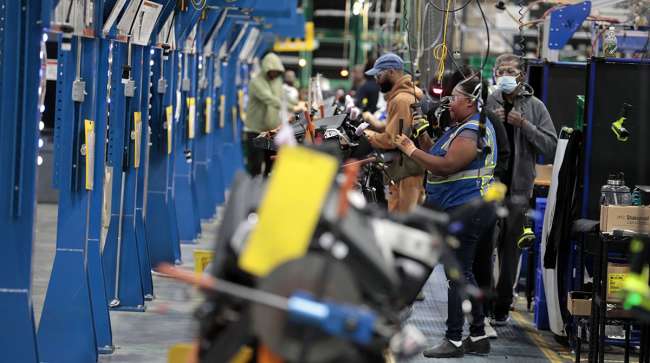Manufacturing Growth Weakens to Two-Year Low as Orders Slump

[Stay on top of transportation news: Get TTNews in your inbox.]
A measure of U.S. manufacturing activity weakened in June to a two-year low as new orders contracted, restrained by lingering supply constraints and some softening in demand.
The Institute for Supply Management’s gauge decreased to 53 last month from 56.1 in May, according to data released July 1. Readings above 50 indicate expansion. The figure was weaker than most economists’ estimates in a Bloomberg survey, which had a median projection of 54.5.
The group’s index of new orders dropped nearly 6 points to 49.2, the poorest result since May 2020, when the economy was digging its way out of the pandemic-induced recession. Shrinking orders come as consumer spending slows under the weight of inflation and inventories pile up.
Demand fell, with the New Orders Index going into contraction, and #supplychain constraints continued as U.S. factories posted their slowest growth in two years, the June #Manufacturing @ISM® Report On Business® found. The PMI® was 53%. https://t.co/LMzxziIOZq #ISMPMI #economy — Institute for Supply Management (@ism) July 1, 2022
The ISM gauge of manufacturer inventories ticked up to 56, near the highest reading since 2010.
Timothy Fiore, chair of ISM’s Manufacturing Business Survey Committee, said that manufacturing growth was “held back by supply chain constraints,” with respondents noting that and pricing were their biggest concerns.
Fifteen manufacturing industries reported growth in June, led by apparel, textiles, printing, and computer and electronic products.
Stocks pared gains after the release, while Treasuries extended their advance and the dollar strengthened.
The results are consistent with several regional Federal Reserve bank surveys that show a clear pullback in June factory activity. Gauges of manufacturing in Texas and in the Fed districts of Philadelphia and Richmond dropped to the lowest levels since May 2020.
Data on June 30 showed U.S. inflation-adjusted consumer spending fell in May for the first time this year, reflecting a drop in outlays for goods.
In a sign that supply chains and capacity constraints appear to be easing, ISM’s measures of delivery times and backlogs both declined in June to the lowest levels since 2020. Meanwhile, the purchasing managers group’s production index climbed to a four-month high.
And for a third straight month, a gauge of price paid by producers declined, suggesting costs of raw materials are starting to ease. However, the index remains elevated and concerns about high petroleum prices linger.
The ISM’s employment index fell to the lowest since August 2020, suggesting firms are struggling to find workers.
— With assistance from Kristy Scheuble.
Want more news? Listen to today's daily briefing below or go here for more info:



